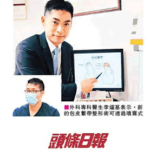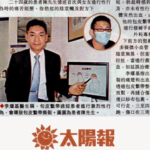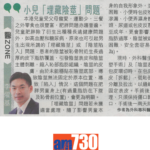What is onychomycosis?
Onychomycosis is a disease caused by fungal infection of toenails or fingernails and the surrounding tissue. It can affect just one finger or one toe. It can also affect multiple fingers or multiple toes.
The causative pathogens of onychomycosis are coming from the fungus kingdom. They are dermatophytes, candida (yeasts), and non-dermatophytic molds. Candida and nondermatophytic molds are more frequently found in onychomycosis patients in the tropics and subtropics with a hot and humid climate; dermatophytes are most commonly responsible for onychomycosis in patients from the temperate western countries.
Risk factors of onychomycosis are cancer, diabetes, psoriasis, foot fungal infection, peripheral vascular disease, immunocompromised patients, family members with onychomycosis, regular swimming activity, & elderly people.
When the onychomycosis infection persists, it will affect the growth of the nails. As your nail thickens, the corner and edge of your diseased nail becomes crooked. Using your diseased fingertips, or performing simple walking and hopping on the diseased tiptoes, these actions may cause the crooked nail hitting against the nail bed or nail edge. As a result, it can lead to pain, ischemia, erosion, ulceration, inflammation and subsequent bacterial infection.
Most early-stage onychomycosis does not cause much symptoms. Therefore, most patients only seek medical advice when they are in pain and have a severe onychomycosis.
Symptoms
Symptoms of onychomycosis include:
- Nail deformity (the edges of the nail curling inwards (most common), and the distal end of the nail curls upward or downwards)
- Discolored nail (nails turn gray, yellow, brown, or charcoal gray)
- Thickened nail (causing difficulty in clipping / trimming nails)
- Disfigured nail (thinning, brittle, cracked, easily broken, tiny particles/fragments under the nail)
- Odorous nail (strange/bad smell)
- Painful nail (deformed nail presses and erodes the nail bed and nail edge skin, causing pain, ischemia, erosion, ulceration, inflammation and subsequent bacterial infection)
Clinically, onychomycosis may be classified into five types:
- Distal subungual onychomycosis: The most common type, involves the nail bed and, subsequently, the nail plate.
- White superficial onychomycosis: Usually manifests as superficial white patches with distinct edges on the surface of the nail plate.
- Proximal subungual onychomycosis: Results when the fungal organism enters via the cuticle and the ventral aspect of the proximal nail fold. There is a patch of abnormal color and deformed proximal nail.
- Endonyx onychomycosis: Occurs when fungus invades the nail plate only. The nail structure looks normal but of abnormal color.
- Total dystrophic onychomycosis: Occurs when the fungus completely destroys the nail plate and distorts the nail growth. There is no normal looking nail.
Diagnosis and Investigation
Treatment
Patients should take care to avoid minor injuries to their nails and practice proper nail care.
There are many ways to treat onychomycosis. Onychomycosis is mostly caused by fungi. There are antifungal drugs that can inhibit fungal growth and cure onychomycosis. The main treatments of onychomycosis are oral antifungal drugs and topical antifungal drugs currently used (oral drugs, external drugs) +/- surgery.
The most commonly used oral medications are terbinafine, itraconazole, and fluconazole. The clinical cure rate is as high as 75%. Patients with liver disease should avoid the use of terbinafine. Please consult your doctor for advice.
Commonly used topical drugs include ciclopirox, efinaconazole, and tavaborole. Clinical cure rates are low (<30%), so they are used only as an adjunct to oral therapy. Please consult your doctor for advice.
Laser can be used to treat onychomycosis but may cause severe bleeding or pain. Please consult your doctor for advice.
If complications occur with onychomycosis, such as ingrown nail, nail skin edge ischemia, nail skin edge pressure ulcer, bacterial infection, paronychia, periungual abscess, pyogenic granuloma, then you need to consider surgical treatment. Please consult an experienced surgeon for advice.
















